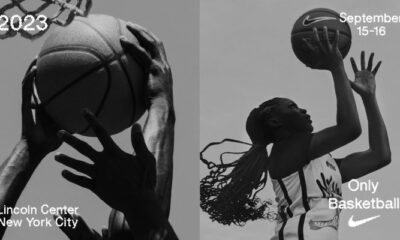Education
Columbia Creates Commission on the History of Race and Racism at the University


This faculty-led group was appointed to assess current symbols and representations at Columbia and establish guidelines for future ones, guided by a commitment both to historical accuracy and to an inclusive campus environment.
Columbia President Lee C. Bollinger announced the creation of the President’s Commission on the History of Race and Racism at Columbia University. This faculty-led body will assess and establish guidelines for existing and future symbols and representations at Columbia, placing them in historical context and their relationship to racism, guided by a commitment both to historical accuracy and to an inclusive campus environment.
“Central to Columbia’s ongoing commitment to antiracism is a thoughtful and contextualized reassessment of what and whom we commemorate,” said President Bollinger. “This commission will guide critical decision-making as we work to make sure that our campuses reflect our values and offer welcoming spaces to students, faculty, staff, and alumni.”
This commission is another step forward in Columbia University’s Antiracism Initiative, launched in the wake of George Floyd’s murder to combat racism on a number of fronts. Among several working groups charged with recommending actions in areas ranging from public safety to faculty hiring, a Symbols and Representation Working Group, led by the Provost, was appointed to develop recommendations for principles and processes for actions that could alter campus symbols as well as named awards and professorships.
“Central to Columbia’s ongoing commitment to antiracism is a thoughtful and contextualized reassessment of what and whom we commemorate,” said President Bollinger. “This commission will guide critical decision-making as we work to make sure that our campuses reflect our values and offer welcoming spaces to students, faculty, staff, and alumni.”
The establishment of the commission was the first of several Working Group recommendations, which also include the creation of guidelines for assessing existing symbols and for commissioning new ones, the establishment of an open, diverse forum to discuss the physical campus and its symbols, expansion of the Columbia University and Slavery project, and the addition of historical context posted in campus buildings with background on their ties to race and racism, with a particular focus on residence halls.
“The Working Group has strived to determine how to best address the legacies of racism,” said Provost Mary C. Boyce, who has convened the group since she became Provost in July 2021. “By establishing an enduring advisory body, led by faculty and comprised of key stakeholders, we will propel this work forward and ensure it is informed by a range of perspectives.”
The commission will be led by co-directors Mabel O. Wilson, the Nancy and George Rupp Professor of Architecture, Planning, and Preservation and a professor in African American and African Diasporic Studies, and Ira Katznelson, Ruggles Professor of Political Science and History. It will include stakeholders including Trustees, faculty, and alumni.
“The creation of this commission follows directly from important work already accomplished that is geared to advance Columbia’s anti-racist values,” said Ira Katznelson. “Guided by principles and open procedures, we will consider how best to amplify historical knowledge and address challenging questions about campus symbols and representation.”
“The built environment shapes the daily experiences of everyone on campus. Whether or not we are conscious of it, buildings, artworks, and their placement convey narratives about power, both by presence and omission,” said Mabel O. Wilson. “Revisiting our symbols and their meanings will help build a more inclusive and welcoming campus.”
The commission’s work will build on the existing Columbia University and Slavery project, launched by President Bollinger with historian Eric Foner in 2016, to develop an undergraduate seminar in which students research and publish their findings about the university’s ties to slavery and anti-slavery movements. The Columbia University and Slavery project will be embedded within the commission, and one of the commission’s first projects, already well underway, involves the seminar’s participants, who were asked to develop historical materials regarding race-related histories of several residence halls; hold public conversations about the findings; the first of which took place in April, June, and October; and produce displays for building residents and passersby to share the history.
By engaging the community and acknowledging Columbia’s complex past, the commission hopes the displays will affect students’ relationship to campus, conveying a more robust understanding of the university’s legacy.
“Columbia is highly regarded for its diversity, but it’s important to recognize that this was not always the case,” said Trey Greenough, a General Studies student who developed historical materials for Furnald Hall, near which in 1924, white students burned a cross to express anger about the presence of a Black student resident. “The path that led to Columbia’s current demographic composition was hard fought and riddled with discrimination. The building markers project is a phenomenal way to begin educating the Columbia community about these historical nuances.”
Source – Columbia University
-

 Auto2 years ago
Auto2 years agoHonda Marine Debuts All-New BF350 Outboard Company’s First V8 Motor Available Commercially, Flagship Model Offers Premium Power and Unparalleled Performance for Extraordinary Boating Experiences
-

 Auto2 years ago
Auto2 years agoNew Features Further Increase Desirability Of Bentayga Range
-

 Technology2 years ago
Technology2 years agoOracle Partners with TELMEX-Triara to Become the Only Hyperscaler with Two Cloud Regions in Mexico
-

 Auto2 years ago
Auto2 years agoHonda and Acura Electric Vehicles Will Have Access to Largest EV Charging Networks in North America Aided by New Agreements with EVgo and Electrify America
-

 Lifestyle2 years ago
Lifestyle2 years ago2023 Nike World Basketball Festival Brings the Best of Basketball Style, Culture and Community














